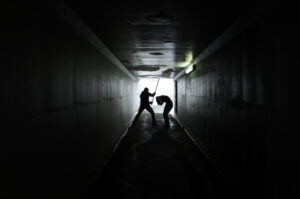Bangladesh is a desperately poor country, with most of its 140 million citizens living in abject poverty. The former East Pakistan lies on the Bay of Bengal and is one of the world’s most densely populated countries. This is a nation of low-lying land with extensive deltas where Himalayan rivers empty into the sea and the annual monsoon invariably causes severe flooding that displaces vast numbers of people.
Ironically for a country that practically floats, a major concern is sickness caused by poor sanitation and a shortage of uncontaminated drinking water. It is estimated that around a quarter of deaths in Bangladesh stem from water-related diseases; so when the fledgling democracy emerged from civil war with Pakistan in the early 1970s, foreign governments and NGOs (Non-Governmental Organizations) were quick to offer aid.
It was imperative to address the chronic problem of inadequate drinking water and there was a concentrated aid focus on the creation of tube wells. Even sophisticated versions are simple, consisting of a stainless steel pipe bored down to an underground water supply with an electric pump lifting water into a small reservoir that often does double duty as the village bathhouse. In Bangladesh, millions of shallow tube wells were created using hand pumps rather than unavailable electricity. This well-meaning policy seemed to make absolute sense, and nobody anticipated the disastrous consequences of this wholesale infrastructure investment.
Unfortunately, much of Bangladesh’s groundwater turned out to be infused with arsenic. The problem was not identified until the 1990s, when it became apparent that many of the tube wells were seriously contaminated – to the point where the World Health Organisation described it as ‘the largest mass poisoning in history’. In seeking to solve one acute health problem with the best of intentions, a ticking medical time bomb had been unleashed.
When: 1970s to the present day
Where: All over Bangladesh
Death toll: Unknown, but a significant number of deaths caused by cumulative arsenicosis (poisoning) and assorted arsenic-related cancers have already been recorded … with many thousands more expected in the years ahead.
You should know: Once the problem was understood, a concerted program (keenly supported by the very aid agencies that had inadvertently contributed to the problem in the first place) to eliminate contaminated wells was initiated, with a view to ensuring that all tube wells in Bangladesh would deliver arsenic-free water by 2013.






















